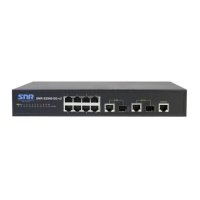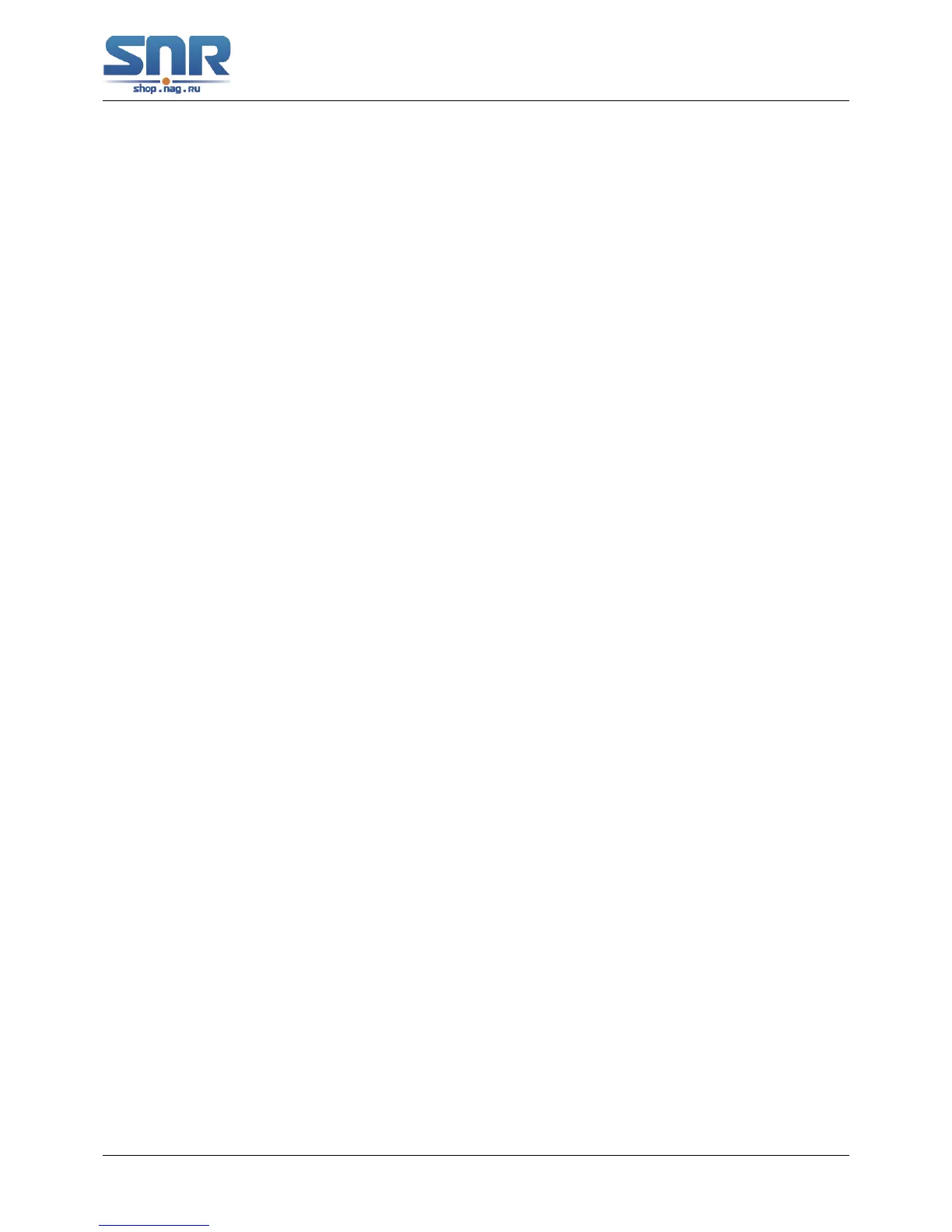SNR S2940-8G-v2 Switch Configuration Guide
DDM Configuration
3. Compatibility verification
Compatibility verification is used to analyze whether the environment of the module accords the
data manual or it is compatible with the corresponding standard, because the module capability
is able to be ensured only in the compatible environment. Sometimes, environment parameters
exceed the data manual or the corresponding standard, it will make the falling of the module
capability that result in the transmission error.
Environment is not compatible with the module are as below:
1. Voltage exceeds the set range
2. Rx power is overload or is under the sensitivity of the transceiver
3. Temperature exceeds the range of the running temperature
12.1.2 DDM Function
DDM descriptions are shown in the following:
1. Show the monitoring information of the transceiver
Administrator is able to know the current working state of the transceiver and find some potential
problems through checking the real-time parameters (including TX power, RX power, Temperature,
Voltage, Bias current) and querying the monitoring information (such as warning, alarm, real-time
state and threshold, and so on). Besides, checking the fault information of the fiber module helps
administrator to fast locate the link fault and saves the restored time.
2. Threshold defined by the user
For real-time parameters (TX power, RX power, Temperature, Voltage, Bias current), there are
fixed thresholds. Because the user's environments are difference, the users is able to define the
threshold (including high alarm, low alarm, high warn, low warn) to flexibly monitor the working
state of the transceiver and find the fault directly.
The thresholds configured by the user and the manufacturer can be shown at the same time.
When the threshold defined by the user is irrational, it will prompt the user and automatically pro-
cess alarm or warning according to the default threshold. (the user is able to restore all thresholds
to the default thresholds or restore a threshold to the default threshold)
Threshold rationality: high/low warn should be between high alarm and low alarm and high
threshold should be higher than low threshold, namely, high alarm >= high warn >= low warn >=
low alarm.
For fiber module, verification mode of the receiving power includes inner verification and outer
verification which are decided by the manufacturer. Besides the verification mode of the real-time
parameters and the default thresholds are same.
3. Transceiver monitoring
Besides checking the real-time working state of the transceiver, the user needs to monitor the
detailed status, such as the former abnormity time and the abnormity type. Transceiver monitoring
helps the user to find the former abnormity status through checking the log and query the last ab-
normity status through executing the commands. When the user finds the abnormity information of
the fiber module, the fiber module information may be remonitored after processing the abnormity
information, here, the user is able to know the abnormity information and renew the monitoring.
87

